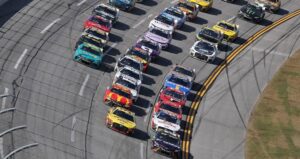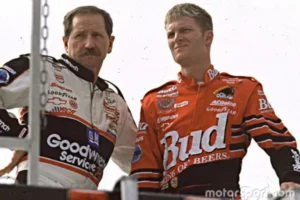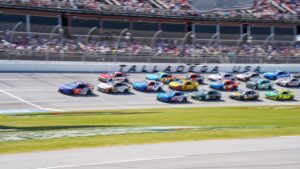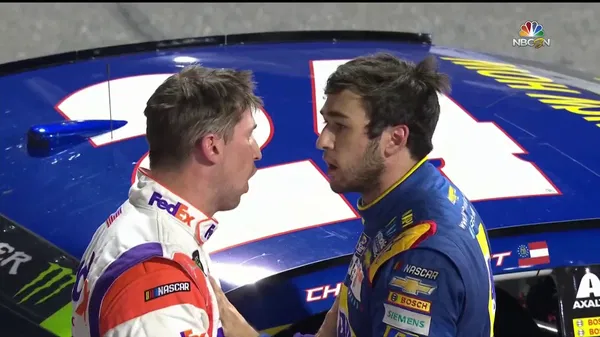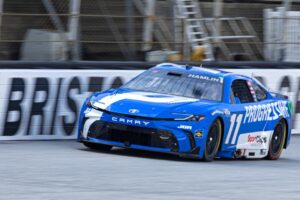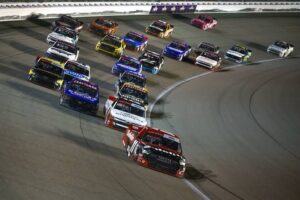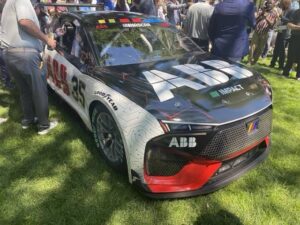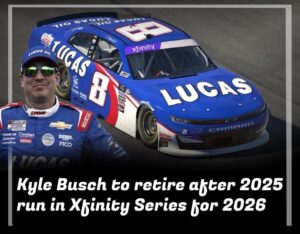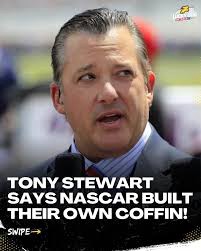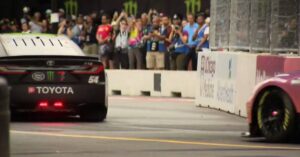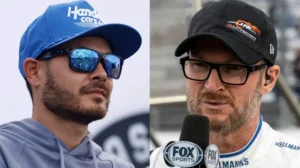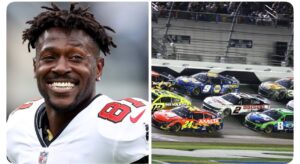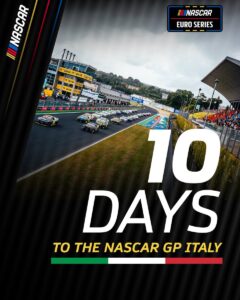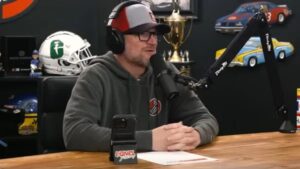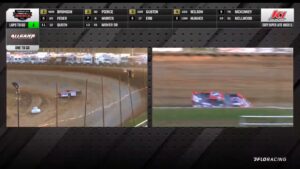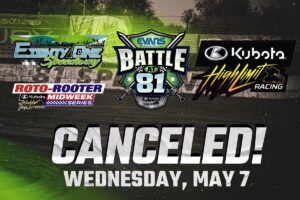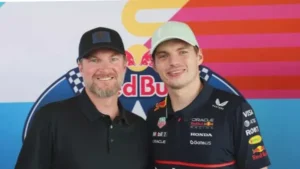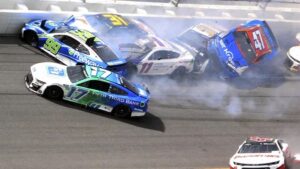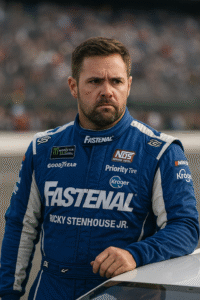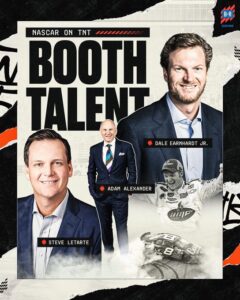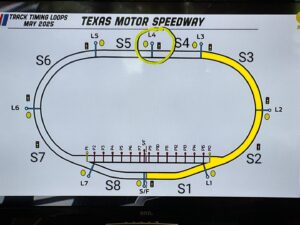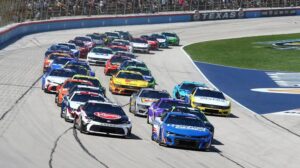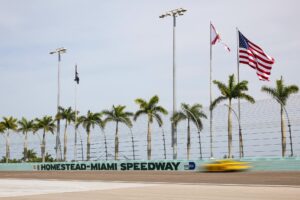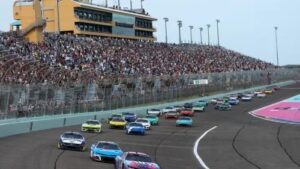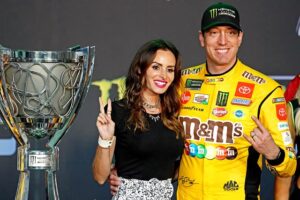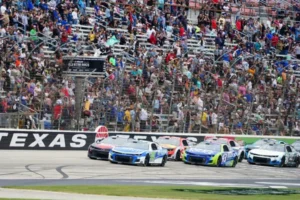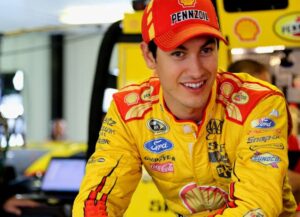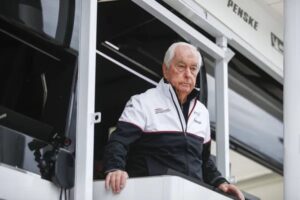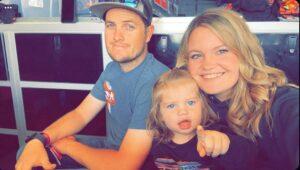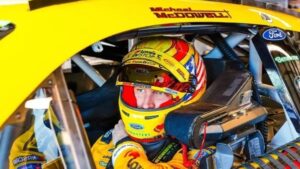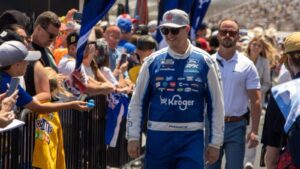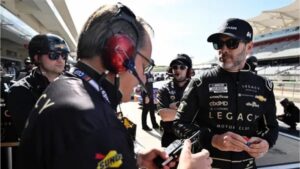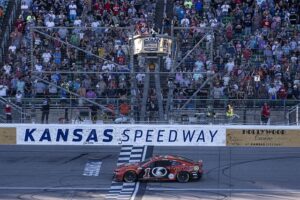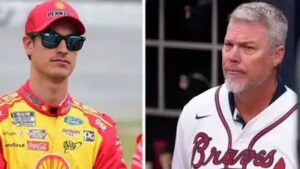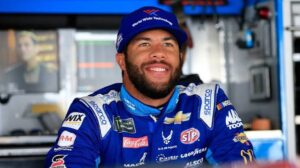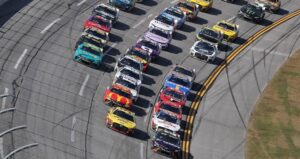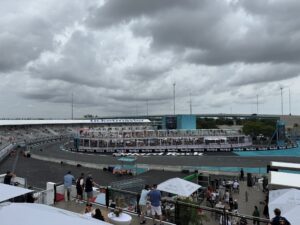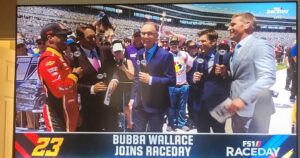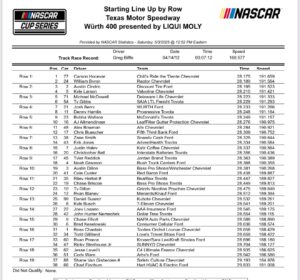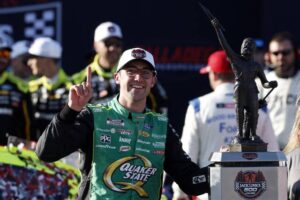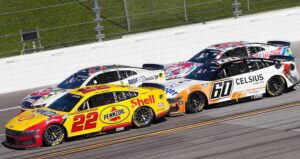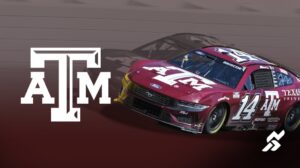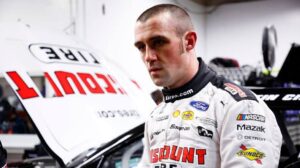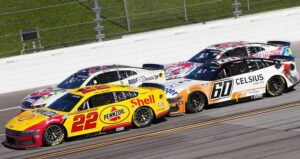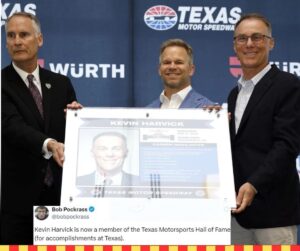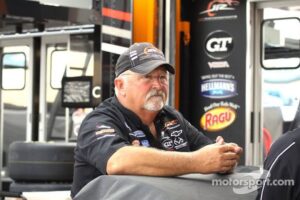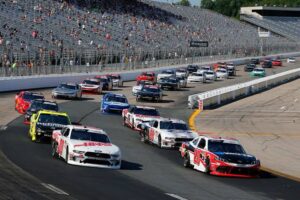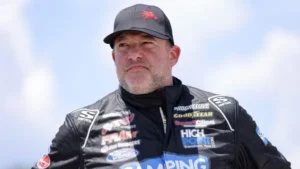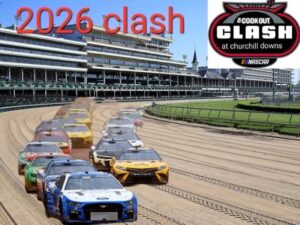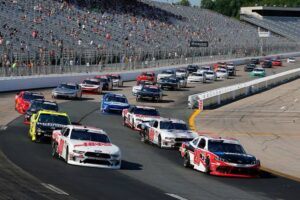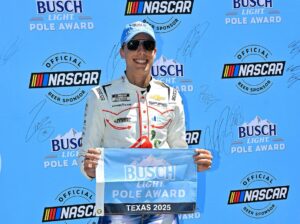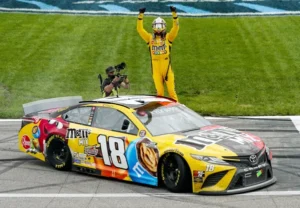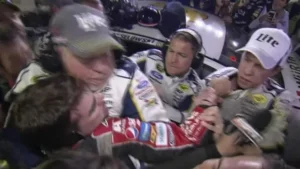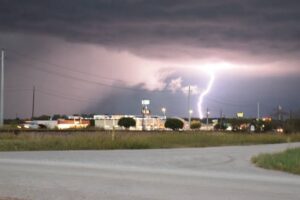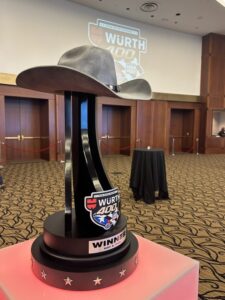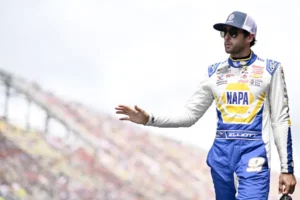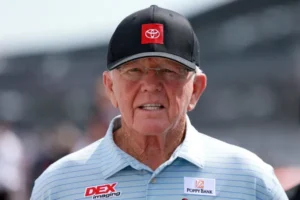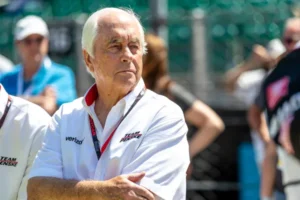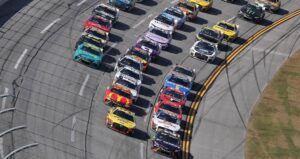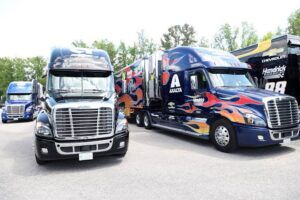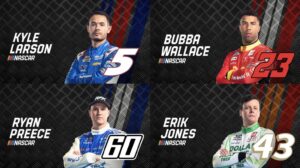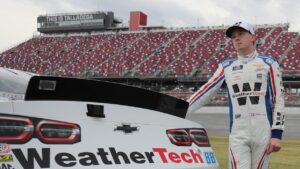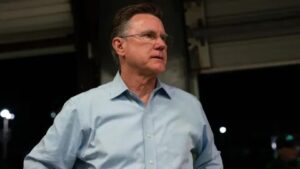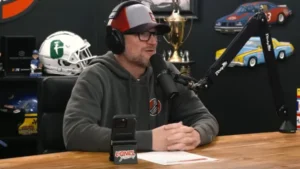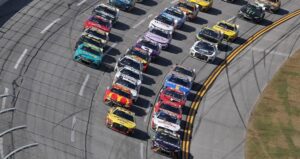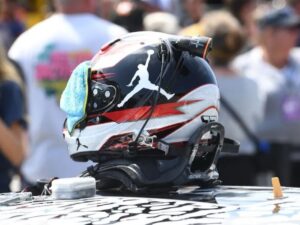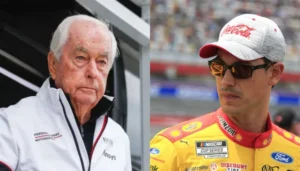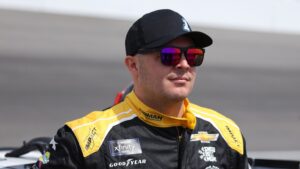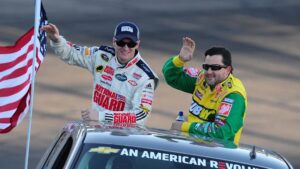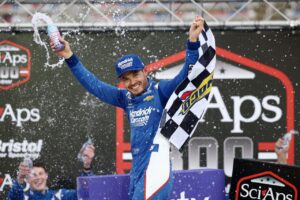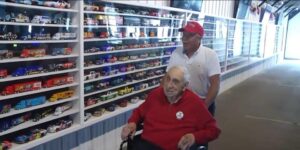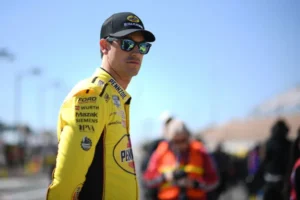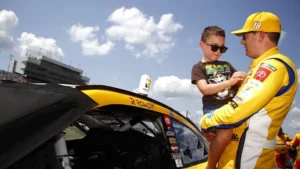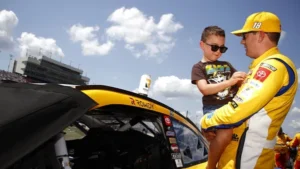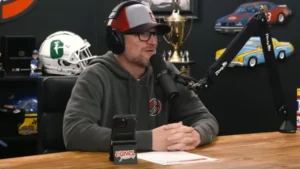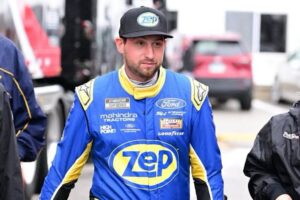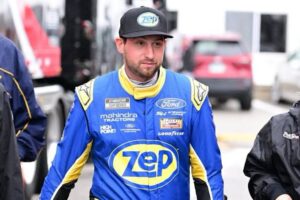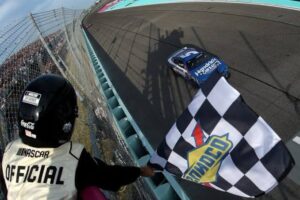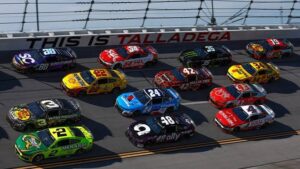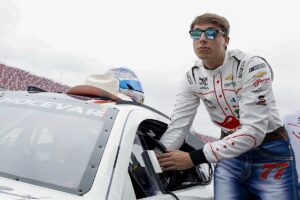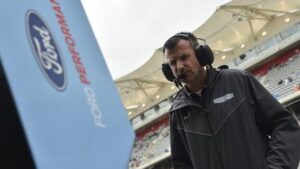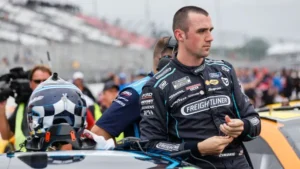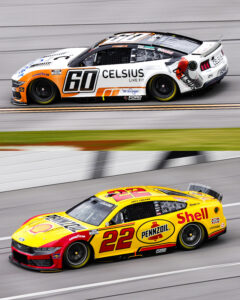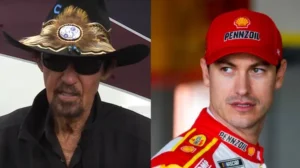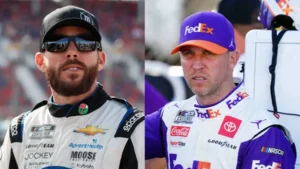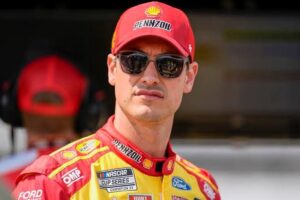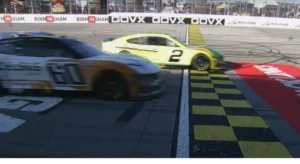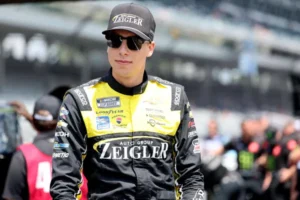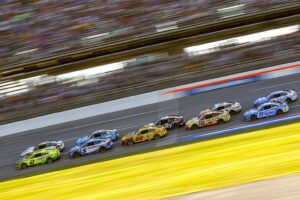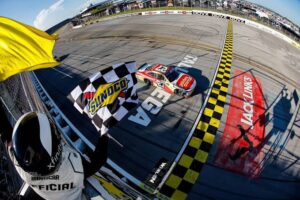Martinsville Speedway is a place where tempers boil over, chrome horns do the talking, and legends are made. But few moments have shaken the NASCAR world quite like the 2017 Martinsville playoff race—when Chase Elliott stood up to the dark arts of Denny Hamlin and became the sport’s ultimate fan-favorite.
The Takeout Heard ‘Round the NASCAR World
With just a few laps to go, Chase Elliott was on the verge of his first Cup Series win. He had fought hard, muscling his way to the front, eyeing a golden ticket to the Championship 4. Then came Hamlin.
In a move that had “villain” written all over it, Hamlin dumped Elliott into the wall, sending his No. 24 spinning as the crowd erupted—not in cheers, but in deafening boos. The young star had been robbed, and NASCAR fans knew it.
Elliott’s Defining Moment
Instead of sulking, Elliott did something that turned him into an instant legend. He confronted Hamlin on pit road, standing nose-to-nose with the veteran, making it crystal clear that he wasn’t going to be NASCAR’s next pushover.
“I get it,” Elliott told Hamlin, sarcasm dripping. “You had to do what you had to do.”
The message? Elliott wasn’t here to be a doormat. He was here to win—and he wasn’t afraid to fight for it.
The Fans Choose Their Hero
That moment changed everything. The grandstands erupted in support of Elliott, and overnight, he became NASCAR’s new moral compass—a driver who played hard but fair, unlike Hamlin, whose reputation as a wreck-or-be-wrecked aggressor was solidified.
From that night on, Chase Elliott wasn’t just Bill Elliott’s son. He wasn’t just Hendrick Motorsports’ golden boy. He was NASCAR’s new hero—the guy who wasn’t afraid to punch back when a veteran tried to push him around.
Fast forward to today, and Elliott is a Cup Series champion, a perennial fan favorite, and the heart of modern NASCAR. But for many, it all started under the lights at Martinsville, when he refused to be a victim and instead became a warrior.
Related Posts:
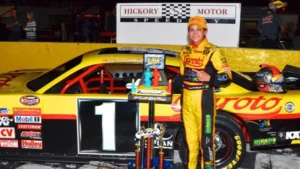
Formula 1 Driver Could Make His NASCAR Debut After Missing Out 4 Years Ago
**Pietro Fittipaldi Eyes NASCAR Debut with Trackhouse Racing’s Project 91**
Pietro Fittipaldi, the Brazilian-American Haas F1 reserve driver and grandson of two-time Formula 1 champion Emerson Fittipaldi, is closer than ever to realizing his NASCAR dream after a near-miss four years ago. Now 28, Fittipaldi’s journey from open-wheel racing to stock cars has reignited interest, with Trackhouse Racing’s innovative “Project 91” program emerging as a potential gateway for his debut.
—
### **Background: A Lifelong Passion for Stock Cars**
Fittipaldi’s roots in NASCAR trace back to his childhood in Miami, where he began karting at age nine. By 2011, he was competing in the NASCAR Whelen All-American Series, earning a Limited Late Models track championship at Hickory Motor Speedway in 2012. Reflecting on this period, he noted, *“I learned so much from car racing through NASCAR”*—a foundation that fueled his versatility across disciplines like IndyCar, endurance racing, and F1.
Despite his success in Europe—including titles in Formula Renault and Formula V8 3.5—Fittipaldi’s heart remained tied to oval racing. In 2021, a collaboration between Dale Coyne Racing and Rick Ware Racing nearly secured him a NASCAR road course seat, but logistical hurdles derailed the plan. Rick Ware, a Cup Series team owner, praised Fittipaldi’s talent, calling him a “natural fit” for NASCAR.
—
### **The Trackhouse Racing Opportunity**
Trackhouse Racing’s **Project 91**—a initiative designed to bring global motorsport stars into NASCAR—has become Fittipaldi’s most promising avenue. The program previously hosted F1 legend Kimi Räikkönen and Supercars champion Shane van Gisbergen, who transitioned to full-time NASCAR racing after his Project 91 debut.
In a recent interview, Fittipaldi expressed enthusiasm: *“Of course, it would be amazing. I feel like my roots are NASCAR racing… I’ve always loved oval racing too”*. Trackhouse’s openness to international talent aligns with Fittipaldi’s profile, especially given his dual role as Haas F1’s reserve driver and his current commitments in IMSA and the European Le Mans Series.
—
### **Challenges and Logistics**
Balancing F1 duties with a NASCAR debut remains a hurdle. Fittipaldi’s schedule includes reserve drives for Haas, IMSA races with Pratt Miller Motorsports, and ELMS campaigns with Vector Sport. However, Trackhouse’s flexible Project 91 model—which allows for one-off entries—could accommodate his packed calendar.
Another factor is equipment availability. Trackhouse’s No. 91 car is reserved for guest drivers, but the team also fields the No. 88 for van Gisbergen. With van Gisbergen now racing full-time, Fittipaldi could target road courses like Circuit of the Americas or Watkins Glen, where his open-wheel expertise would shine.
—
### **Historical Context: F1 Drivers in NASCAR**
Fittipaldi’s potential move follows a small but notable trend of F1 drivers exploring NASCAR. Champions like Jenson Button, Kimi Räikkönen, and Juan Pablo Montoya have all dabbled in stock cars, though none achieved sustained success. Fittipaldi’s unique background—blending NASCAR grassroots experience with F1 technical knowledge—could set him apart.
—
### **Conclusion: A Full-Circle Moment**
For Fittipaldi, a NASCAR debut would fulfill a lifelong ambition. As he told *Frontstretch*, *“I was super excited to do it back then… It feels like destiny.”* With Trackhouse’s global vision and his own resilience—honed through a career-threatening 2018 crash at Spa—the stars may finally align for this cross-disciplinary racer.
If successful, Fittipaldi’s journey could further bridge the gap between F1 and NASCAR, inspiring a new generation of drivers to embrace versatility in motorsport.
